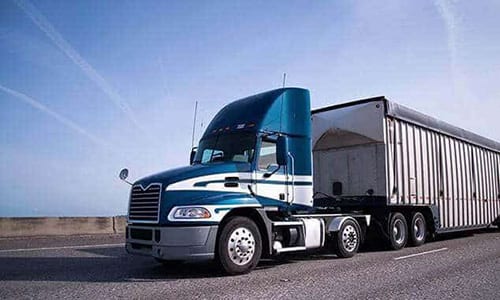The Federal Motor Carrier Safety Administration (FMCSA) is constantly working to keep the public safe from dangers posed by commercial trucks and tractor-trailers. Among their efforts to enforce various existing trucking regulations, federal regulators at the agency also devote considerable time to backing new laws, fighting regulatory rollbacks, and revising standards to protect public safety.
Their latest change: increasing how often random drug tests are administered to truck drivers.
FMCSA Increases Trucker Drug Test Rate
According to a notice published in the Federal Register (Vol. 84, No. 248), the FMCSA announced it would increase the minimum annual rate of random drug testing from 25% of the average number of driver positions to 50%.
The new rate, which took effect on January 1, 2020, applies to an estimated 3.2 million CDL (commercial driver’s license) holders engaged in interstate commerce, and roughly 1 million CDL holders who drive intrastate. In numbers, that means the 1.05 million random drug tests administered in 2019 would increase to roughly 2.1 million tests in 2020.
The reason behind the increase stems from the “Controlled Substances and Alcohol Use and Testing” Final Rule (2001), which established policies that require the FMCSA to increase rates of randomized controlled substances testing when the reported rate of “positive” test results is 1.0% or more for any calendar year (which is was in 2018).
According to submitted results collected by the agency, positive drug test results rose to a little more than the 1% threshold in 2018 following a 0.8% rate in 2017, and a 0.7% rate in 2016. One factor behind the increase could come from the Department of Transportation adding various synthetic opioids to the list of screened drugs. That addition, which began in 2018, added oxycodone, oxymorphone, hydrocodone, and hydromorphone to the list. Still, the rise is a major concern for anyone who drives on public highways – commercial driver substance abuse substantially increases risks of serious wrecks.
In short, the FMCSA increased the random drug testing rate because the number of truck drivers testing positive for controlled substances has been on the rise – at least in recent years. The FMCSA previously reduced random drug testing levels to 25% in 2016, after it had been at the 50% rate for a number of years. Random alcohol testing rates will remain at 10%.
Trucking Industry Continues to Face Hurdles in 2020
Though the FMCSA notes increased testing will cost the already-strained trucking industry between $50 and $70 million, it is a move which protects public safety, and – in our firm’s opinion, clearly warranted.
Still, trucking operators have been outspoken in how the rate change will impact their businesses, citing not only added expenses for testing more of their drivers and short notice of the rate change, but also challenges in meeting the 50% mark when many U.S. operators are battling high turnover rates created by the continued truck driver shortage. Others express frustration at the federal government’s unwillingness to accept hair samples for testing.
Another problem came earlier this month, when the FMCSA’s long-awaited Drug and Alcohol Clearinghouse was launched. The Clearinghouse – a database for CDL holders’ drug and alcohol violations – must be used by employers for pre-employment screening and annual compliance checks. Unfortunately, it experienced significant connectivity issues, error messages, and long loading times when it launched on January 6th. In response, the agency placed a notice on the Clearinghouse website to guide employers facing technical difficulties on permitted hiring practices under specific rules (49 CFR 391.23(e)), allowing them to hire drivers with the requirement that they complete pre-employment screening once the Clearinghouse functions as intended.
Aside from the difficulties of day-to-day compliance, U.S. trucking operators have other problems on their hands. As discussed in some of our blogs, that includes a major shortage of truck drivers, increasing use of enforcement technology like ELDs, truck accident cases being resolved through increasingly larger and larger “mega verdicts,” and the possible end of an administration that shared the industry’s penchant for regulatory rollbacks.
CSCS: Accident Attorneys Serving the DMV
While there is a fine balance between what’s best for public safety and the regulation of business practices, there’s no denying the immense risks commercial trucks and tractor-trailers pose on our roads. As a firm that handles injury and wrongful death claims, our firm has seen the devastating consequences of truck accidents first-hand – and we know decisive regulatory action is needed to change the tone of today’s trucking industry, and stem the tide of preventable tragedies.
Chaikin, Sherman, Cammarata & Siegel, P.C. handles accident cases involving passenger and commercial vehicles throughout DC, Maryland, and Virginia. Call (202) 659-8600 or contact us online to request a free evaluation of your case.

